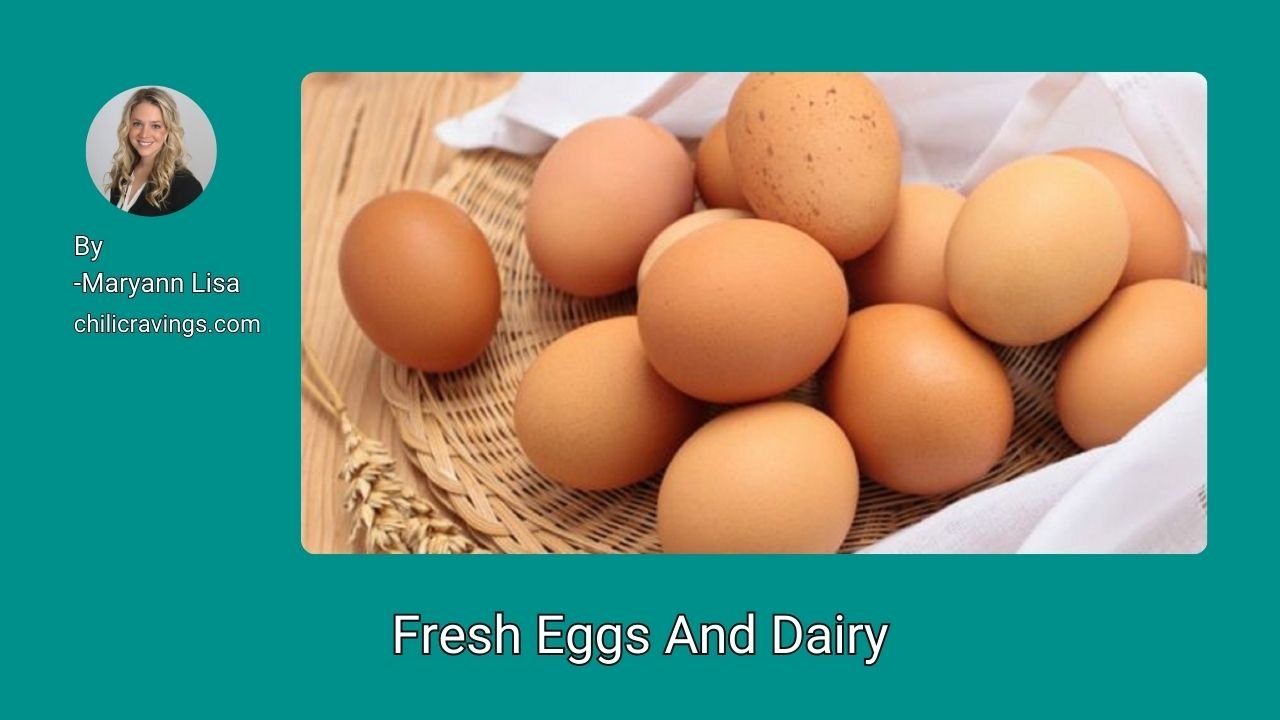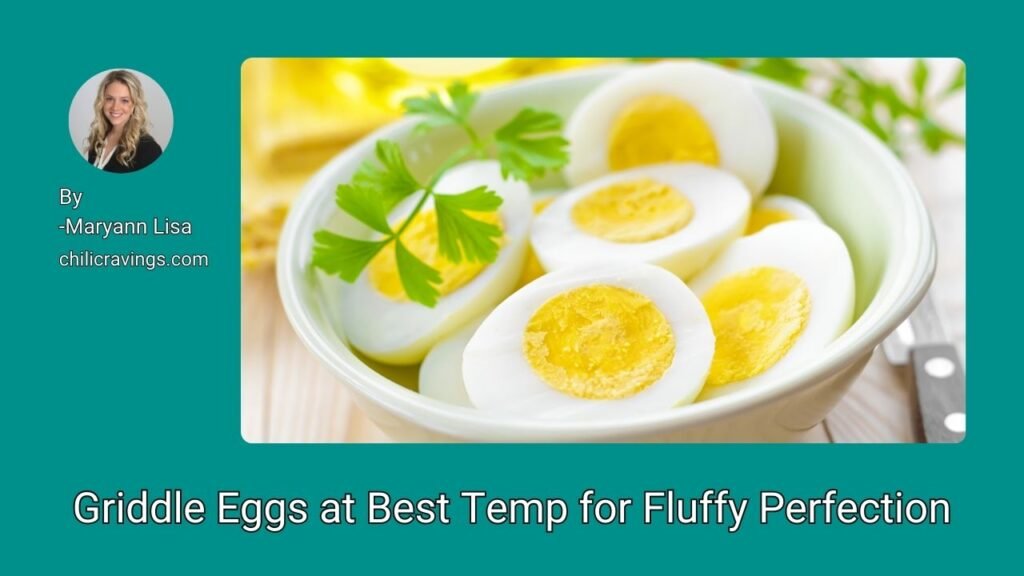Cooking perfect eggs on a griddle can be tricky. The right temperature makes all the difference.
Eggs are a breakfast staple loved by many. Getting them just right can be a challenge. The secret? Temperature control. Too hot, and you risk a rubbery mess. Too low, and they might not cook evenly. Finding that sweet spot ensures fluffy, delicious eggs every time.
In this blog post, we’ll explore the best temperature for cooking eggs on a griddle. We’ll share tips to help you achieve that perfect, fluffy texture. Whether you like them scrambled, sunny side up, or over easy, knowing the right temperature is key. Stick around to learn how to make your morning eggs the best they can be.
Choosing The Right Griddle

Choosing the right griddle is crucial for achieving fluffy eggs. The type, size, and material of the griddle can make a big difference. Let’s explore the options to help you make an informed choice.
Electric Vs. Gas Griddles
Electric griddles are easy to use and maintain. They offer consistent heat and are perfect for indoor cooking. Gas griddles heat up quickly and provide better temperature control. They are ideal for outdoor cooking and larger batches. Consider your cooking environment and needs.
Size And Material Considerations
The size of the griddle matters. A larger griddle can cook more eggs at once. But it needs more storage space. Small griddles are easier to store but may limit your cooking capacity. Think about how many eggs you want to cook at a time.
Griddles come in different materials. Cast iron griddles retain heat well and cook evenly. But they are heavy and require maintenance. Non-stick griddles are easy to clean and lightweight. But they may not last as long. Choose a material that fits your lifestyle.
Essential Tools And Ingredients
Creating the perfect griddle eggs requires more than just skill. It demands the right tools and ingredients. Knowing what to use can make all the difference. Here’s a guide to the essential tools and ingredients for achieving fluffy perfection.
Non-stick Spatula
A non-stick spatula is a must-have tool. It helps in flipping the eggs smoothly without breaking them. Look for a spatula with a flexible edge. This allows you to glide under the eggs with ease. Silicone spatulas are a popular choice because they are gentle on the griddle surface.
| Feature | Benefit |
|---|---|
| Flexible Edge | Prevents breaking |
| Silicone Material | Non-stick and gentle |
Fresh Eggs And Dairy

For the best griddle eggs, use fresh eggs. Fresh eggs have a more vibrant yolk and better texture. Check the date on the egg carton before using. Also, consider using organic or free-range eggs for a richer flavor.
Dairy products, such as milk or cream, can be added to the eggs. This makes them fluffier and richer. Use about one tablespoon of milk or cream per egg. Whisk the eggs and dairy together until well combined. This helps incorporate air, leading to fluffier eggs.
- Fresh eggs with vibrant yolks
- Organic or free-range eggs
- Milk or cream for added richness
These simple tools and fresh ingredients can elevate your griddle eggs. Try them out and enjoy the fluffy perfection!
Prepping Your Griddle
Prepping your griddle is key to making perfect fluffy eggs. A well-prepared griddle ensures even cooking and prevents sticking. Follow these steps to get your griddle ready for action.
Cleaning The Surface
Start with a clean griddle surface. Use a soft cloth and warm soapy water. Wipe down the griddle to remove any residue. Rinse thoroughly and dry with a clean towel. A clean surface ensures the eggs won’t stick.
Preheating Tips
Preheat the griddle to the right temperature. Set it to medium heat, around 325°F to 350°F. Allow the griddle to heat for about 5-10 minutes. A preheated griddle cooks eggs evenly and makes them fluffy.
Setting The Ideal Temperature
Perfecting griddle eggs means mastering the temperature. Griddle temperature plays a big role in the outcome. Get it right, and enjoy fluffy, delicious eggs every time.
Optimal Heat Range
Finding the ideal heat range is key. For griddle eggs, aim for 250°F to 275°F (121°C to 135°C). This range ensures the eggs cook evenly without burning. Too hot, and the eggs will brown too quickly. Too low, and they will be runny.
Use a kitchen thermometer to check the temperature. Adjust as needed. Consistency is important for the perfect result.
Impact Of Temperature On Texture
Temperature affects the texture of your eggs. At the right heat, eggs turn out fluffy and moist. High heat causes the eggs to dry out and become rubbery. Low heat results in undercooked, runny eggs.
Control the temperature to achieve the desired texture. This balance is what makes your griddle eggs stand out.
Here’s a quick overview in a table:
| Temperature (°F) | Texture Outcome |
|---|---|
| Below 250°F | Runny, undercooked |
| 250°F – 275°F | Fluffy, moist |
| Above 275°F | Dry, rubbery |
Remember, the goal is a consistent temperature within the optimal range. This ensures fluffy, perfect eggs every time. Experiment and find the exact spot that works for you.
Perfecting Your Egg Mixture
Perfecting your egg mixture is crucial for achieving fluffy, delicious griddle eggs. The process includes whisking the eggs properly and adding the right ingredients. This section will guide you through these steps to ensure your griddle eggs are perfect every time.
Whisking Techniques
Whisking is essential for creating a light and airy egg mixture. Start by cracking the eggs into a bowl. Use a fork or a whisk to beat the eggs thoroughly. Make sure to break up the yolks and combine them with the whites.
For the best texture, whisk the eggs until they are uniform in color and have a slight foam on top. This helps incorporate air, which contributes to the fluffiness. Avoid over-whisking as it can make the eggs dense.
Adding Milk Or Cream
Adding milk or cream to your egg mixture can enhance the texture and flavor. Milk makes the eggs lighter, while cream adds richness. Use about one tablespoon of liquid for every two eggs.
Pour the milk or cream into the whisked eggs and stir gently until combined. This step ensures a smooth and consistent mixture. Season with salt and pepper to taste before cooking.
Experiment with different ratios to find your preferred texture. Some people prefer a creamier consistency, while others like their eggs lighter.
Cooking Techniques For Fluffy Eggs

Cooking fluffy eggs on a griddle requires the right techniques. The process is simple but each step matters. Start with fresh eggs and a well-heated griddle. Below are the key steps to achieve fluffy perfection.
Proper Pouring Methods
Pouring the eggs correctly is crucial. Use a bowl to beat the eggs well. Ensure the yolks and whites mix thoroughly. Pour the egg mixture onto the griddle slowly. Maintain a consistent flow to spread the eggs evenly.
Here is a quick guide:
- Beat eggs in a bowl until well mixed.
- Heat the griddle to the right temperature.
- Pour the egg mix slowly and evenly.
Gentle Stirring
Stirring the eggs gently helps in achieving a fluffy texture. Use a spatula to stir. Avoid aggressive movements. Gentle stirring allows air to incorporate into the eggs. This results in a light and fluffy texture.
Follow these tips:
- Use a soft silicone spatula.
- Stir in slow, circular motions.
- Do not over-stir; stop once eggs are set.
Avoiding Common Mistakes
Griddle eggs can be a breakfast favorite if done right. Avoiding common mistakes is key to achieving fluffy perfection. Let’s delve into some frequent pitfalls and how to steer clear of them.
Overcooking Issues
Overcooking eggs can lead to a rubbery texture. This happens when eggs stay on the griddle too long. Watch the eggs carefully. Cook on medium heat to avoid tough eggs. Remove them from the heat just before they’re fully set. They will continue to cook a bit after removal.
Sticking To The Griddle
Sticking can ruin your eggs and your griddle. Preheat the griddle properly. Use a non-stick surface or enough oil. Butter or cooking spray works well. Ensure the eggs slide off easily by using a spatula. Gently lift and flip the eggs for a perfect outcome.
Serving And Enjoying
Griddle eggs cooked to fluffy perfection are a delightful breakfast treat. The right serving and presentation can elevate the experience. Pair these eggs with tasty sides for a complete meal. Explore creative ways to plate and enjoy your griddle eggs.
Plating Ideas
Use colorful plates to make the eggs stand out. Arrange the eggs neatly in the center. Garnish with fresh herbs like parsley or chives. Add a few slices of avocado on the side. Sprinkle a bit of paprika for a pop of color. For a rustic look, serve on a wooden board. Place the eggs next to a slice of crusty bread. A simple yet elegant presentation can make a big difference.
Complementary Sides
Serve griddle eggs with crispy bacon for a classic combo. Add a side of roasted tomatoes for a burst of flavor. Fresh fruit like berries or melon can balance the meal. A small salad with vinaigrette makes a light, refreshing side. Toasted bread or a croissant pairs well with fluffy eggs. Consider hash browns or home fries for a hearty addition. Mixing and matching sides can cater to different tastes and preferences.
Frequently Asked Questions
What Is The Best Temperature For Griddle Eggs?
The best temperature for griddle eggs is 250°F to 275°F. This range ensures the eggs cook evenly and remain fluffy.
How Do You Make Fluffy Eggs On A Griddle?
Use a low heat setting of around 250°F. Whisk the eggs well before cooking to incorporate air, ensuring fluffiness.
Can You Cook Scrambled Eggs On A Griddle?
Yes, you can cook scrambled eggs on a griddle. Set the temperature to 250°F and stir gently for fluffy results.
Why Should You Use Low Heat For Griddle Eggs?
Using low heat, around 250°F, prevents overcooking and ensures the eggs stay soft and fluffy. High heat can make them rubbery.
Conclusion
Achieving fluffy eggs on a griddle requires the right temperature. Consistency is key. Keep the griddle at medium heat. This prevents overcooking. Remember to use fresh eggs for the best results. Practice makes perfect. Soon, you will enjoy fluffy, delicious eggs every time.
Enjoy your cooking!


